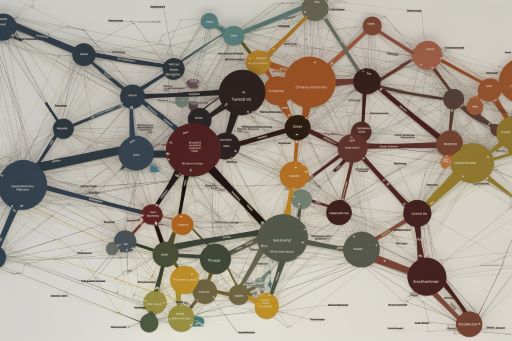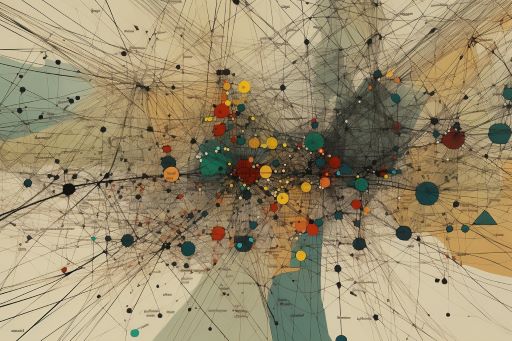Identifying Traffic Types on Network
You can divide most network traffic into three distinct categories: broadcast, multicast and unicast. Each of these has very distinct characteristics which determine how the packets involved are handled by the networking hardware that carry it. It will also have very different effects on network load and capacity, direct unicast requests to Instagram accounts will produce a much smaller load than repeated multicast traffic which can easily flood a network.
Network traffic classification is a process of separating network data into categories based on predetermined criteria. It is an important technique used in many areas such as intrusion detection, Quality-of-Service (QoS) and access control. This article will explore the various methods of classifying network traffic, along with their advantages and limitations. Classification of network traffic has become increasingly relevant due to the growth of distributed computing networks and applications running over them.

As more users are connected to different types of networks from any location at any time, it is necessary for system administrators to have some degree of insight into who or what entities generate which type of traffic within a given environment. Furthermore, this knowledge can be utilized for security purposes as well as resource utilization optimization in order to ensure that limited resources are allocated effectively.
Broadcast Traffic
Broadcast traffic describes the transmission of packets to all devices in a network. All hosts on the same broadcast domain will receive this type of communication regardless of their intended destination address, since there is no specific target device.
Any packet sent as broadcast traffic will be received by any system within range that is configured with the proper protocol and settings. It can be used for various applications such as providing clients with an IP address after they connect to the network or sending out notifications across multiple nodes simultaneously.
It is also useful for discovering services available on other machines, such as finding printers or shared folders on local networks. Broadcast traffic is essential for many types of communications between different endpoints, but it must be managed carefully in order to prevent congestion and ensure reliable performance.
Multicast Traffic
In contrast to unicast traffic, which is sent from one source to a single destination, multicast traffic allows data packets to be sent from one source to multiple destinations. Multicast traffic has become increasingly popular as it provides efficient transmission of large amounts of data that needs to be shared between multiple recipients. It is also particularly useful for applications such as streaming media or distributed systems where the same information needs to be sent at once and in real-time across an entire network.
Examples include online gaming, stock trading services and software updates.
The key advantages of using multicast are:
- Reduced bandwidth usage due to the fact that only one copy of a message is transmitted over the network instead of sending individual messages for each recipient.
- Increased scalability by allowing additional receivers without impacting on the performance of existing ones.
- Improved reliability since if any receiver does not respond, other receivers will still receive their copies correctly.
- Cost savings through reduced hardware requirements as there is no need for dedicated point-to-point connections between all nodes in the network
- Improved scalability as additional nodes can easily be added to the network without having to set up dedicated point-to-point connections for each node.
Unicast Traffic
This is the most commonly used type of network communication, and it involves a single source transmitting data to a single destination. This type of transmission is often used when two devices need to exchange information over an IP-based network. For example, in web browsing, the user’s computer sends out a request for specific content from the server hosting that content; this would be considered unicast traffic.
In addition to web browsing, many other types of applications use unicast traffic as well. Video streaming services such as YouTube or Netflix rely heavily on this form of communication between the client device and their servers. You’ll also see it if you analyse the traffic from popular media streaming services like BBC iPlayer. Online gaming also uses unicast traffic for sending commands from player input devices like controllers or keyboards to game servers and then back again with updated game states. Thus, by relying on efficient unicast transmissions, these applications are able to provide smooth experiences for users without interruption.
Summary
To summarise the three main types of network traffic classifications are broadcast, multicast and unicast.
- Broadcast traffic is data transferred from one source to multiple destinations simultaneously.
- Multicast traffic is data sent from a single source to multiple destinations that have requested the information.
- Unicast traffic is data delivered from one source to one destination only.
With these different types of networks available, an important question arises: What type of communication best suits your organization’s needs? Each type offers its own advantages and it is up to the user to decide which will be most beneficial for their particular situation. Examining the requirements of the environment in terms of reliability, scalability, cost effectiveness, speed and security can help make this decision easier.
Network traffic classifications provide users with various options depending on what they need.
